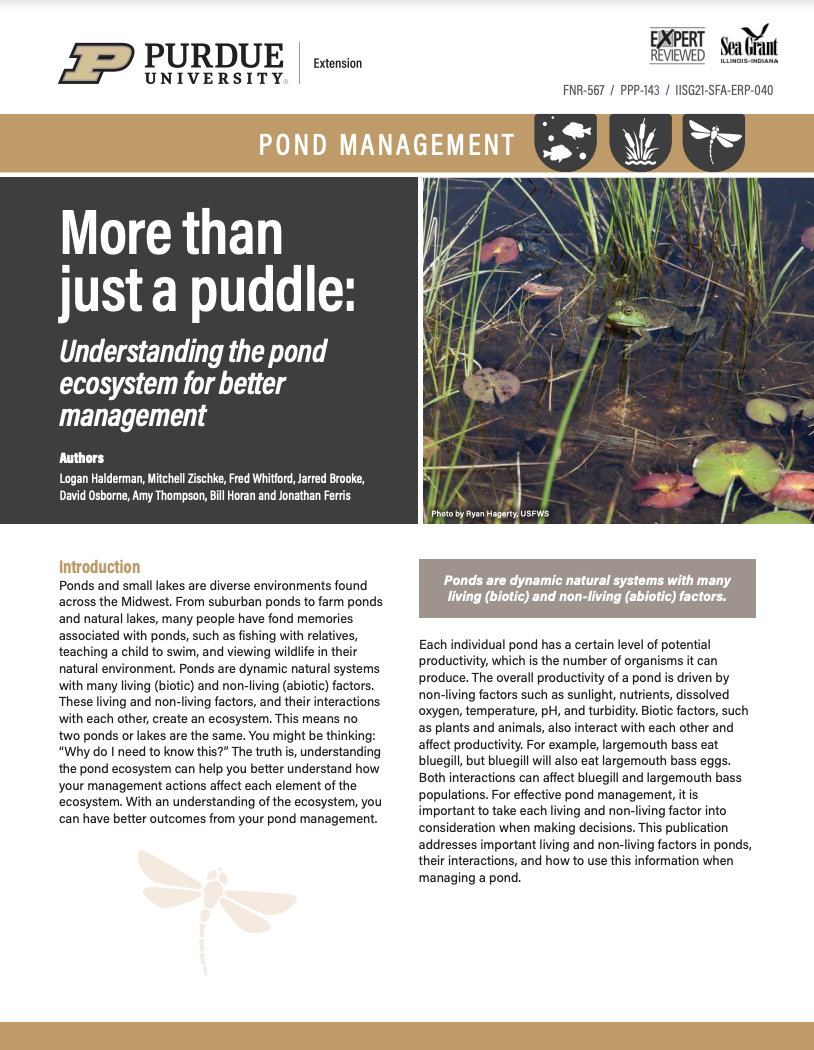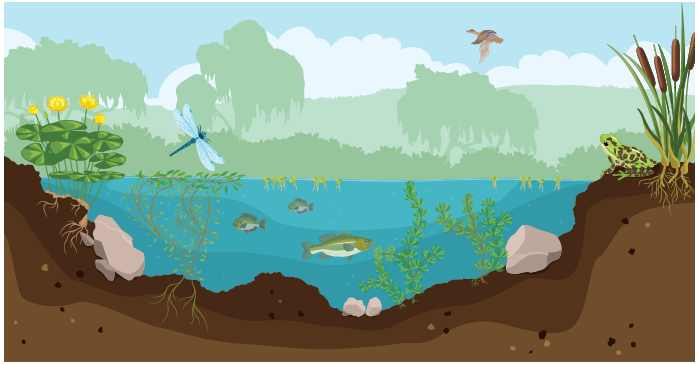The Pond Ecosystem
 A pond is a complex aquatic ecosystem with living and non-living components. Understanding each component and their interactions can better prepare you to sustainably manage your pond. For ponds to provide good fishing opportunities, they need to produce a certain number (and size) of fish. In this regard, ponds are similar to farm fields or vegetable gardens: Each pond has a certain quantity of fish that it can produce based on its size and productivity. Just like gardens, it is important to maintain good fish habitat and prevent undesirable species in your pond.
A pond is a complex aquatic ecosystem with living and non-living components. Understanding each component and their interactions can better prepare you to sustainably manage your pond. For ponds to provide good fishing opportunities, they need to produce a certain number (and size) of fish. In this regard, ponds are similar to farm fields or vegetable gardens: Each pond has a certain quantity of fish that it can produce based on its size and productivity. Just like gardens, it is important to maintain good fish habitat and prevent undesirable species in your pond.
For more information on the various components of a pond ecosystem and how they can be used for effective pond management, please refer to the Purdue Extension Publication FNR-567. This publication covers the following topics:
- Non-living factors: Temperature & oxygen
- Nutrients and plants
- The pond food web
- Predators & prey – they key to fish management
For information on testing the water quality in your pond, please visit the Purdue Forestry and Natural Resources website.

